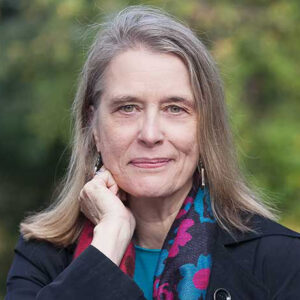Generally, families have one main photographic collection to preserve their memories and history. In fact, I have two: a collection of private memories and a collection that documents my activities as a working photographer.
The private collection has the standard snapshots: ones of children (whose names we have long forgotten) brightly smiling behind a series of birthday cakes, faded ones of our elderly grandparents picking pale mauve-coloured strawberries in a grey-green field, and a rust-toned one of our mother on her wedding day dressed like a satin stalagmite standing next to our father in a tux. If only these photographs could talk, tell jokes or at least predict the future like tarot cards.
The second collection is the evidence of my career as a professional photographer with images that were commissioned for publication or were exhibited. It contains portraits of artists, filmmakers and performers and images of community and cultural events in England and Australia taken over a decade and a half beginning in the 1970’s.
The collections have a few things in common and some interesting differences. Both have images of special events and feature faces that I no longer recognize. In my family album, there are many photographs that were taken before I was born but they still jog memories and emotions. The main difference between the two collections is that the second one was created to engage a wider audience. As a feminist, I was investigating whether I could express this viewpoint through the camera lens.
I was a novice photographer living in London when I set myself the goal of documenting working class restaurants or ‘caffs’ dotted around the city’s high streets. These small cafes were where local workers would find a hearty, low-cost breakfast or lunch and pay in shillings and pence.
Fearlessly, I entered these restaurants and asked the owners for permission to take photographs. I was rarely refused. The interiors typically had an assortment of Formica-topped, brown wooden tables and chairs arranged next to a kitchen counter which divided the cooking area from the eating area.
These cafes had their own sounds and smells—from the percussive jet of boiling water hitting the bottom of large metal tea pots to the aroma of freshly lit cigarettes and the greasy smell of frying bacon and eggs. It felt like I was being introduced to the direct descendants of the Blitz, WWII and rationing.
There was the incidental charm of window boxes with red geraniums spilling over the edges and customers quietly chatting over cups of stewed tea with milk and sugar. I snapped patrons dourly eating one of the daily specials: meat pies, peas, mash and gravy, two sausages, peas, mash and gravy and a dessert sponge that looked like a billiard ball covered with custard.
These photographs reveal my youthful enthusiasm blended with my early take on investigative journalism. Generally, work is not a subject for family albums, but I was intensely interested in these understated social hubs and small businesses often run by a husband-and-wife team or by members of a family. These cafes were especially important to me because they were a safe and cheap place for me to take a break when I was doing a job rather than pubs where I would get hassled as a single woman. I owed them a debt of gratitude, and I always took copies of photographs back to the cafes as a way of saying thanks.
Most of these cafes and their inhabitants have vanished. Looking at the photographs today, it gives me a visceral jolt—it is like entering a time warp where I am suddenly at the beginning of my career again. My family collection was created to preserve private stories and an inherited past, while my professional collection is a record of a period where I was free to look in new directions with the camera as my companion. Both collections, curated by time and memory, tell different stories, and reveal distinct versions of the past.
Outskirts
When I wrote The Newcomer’s Dictionary, I was interested in selecting words that described the newcomer and the newcomer experience from the English language, literature and history. An assortment of words immediately came to mind:
